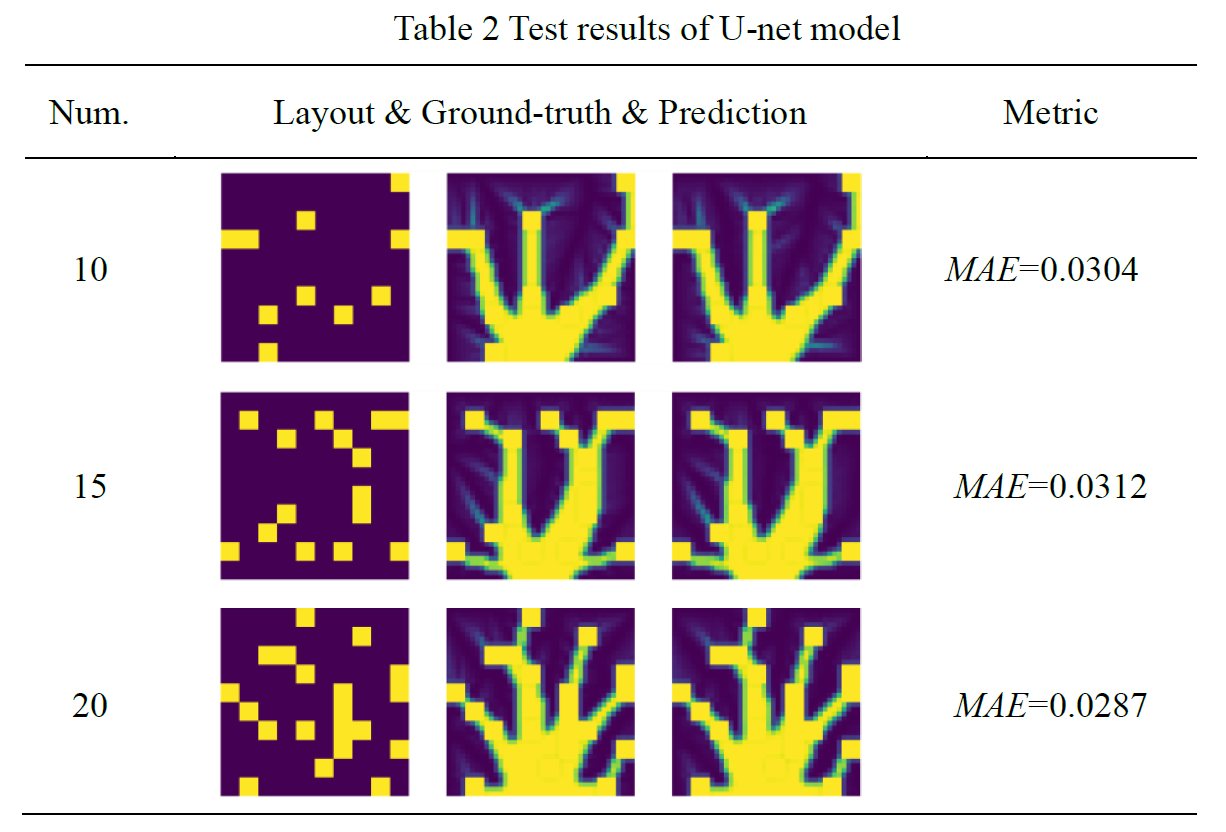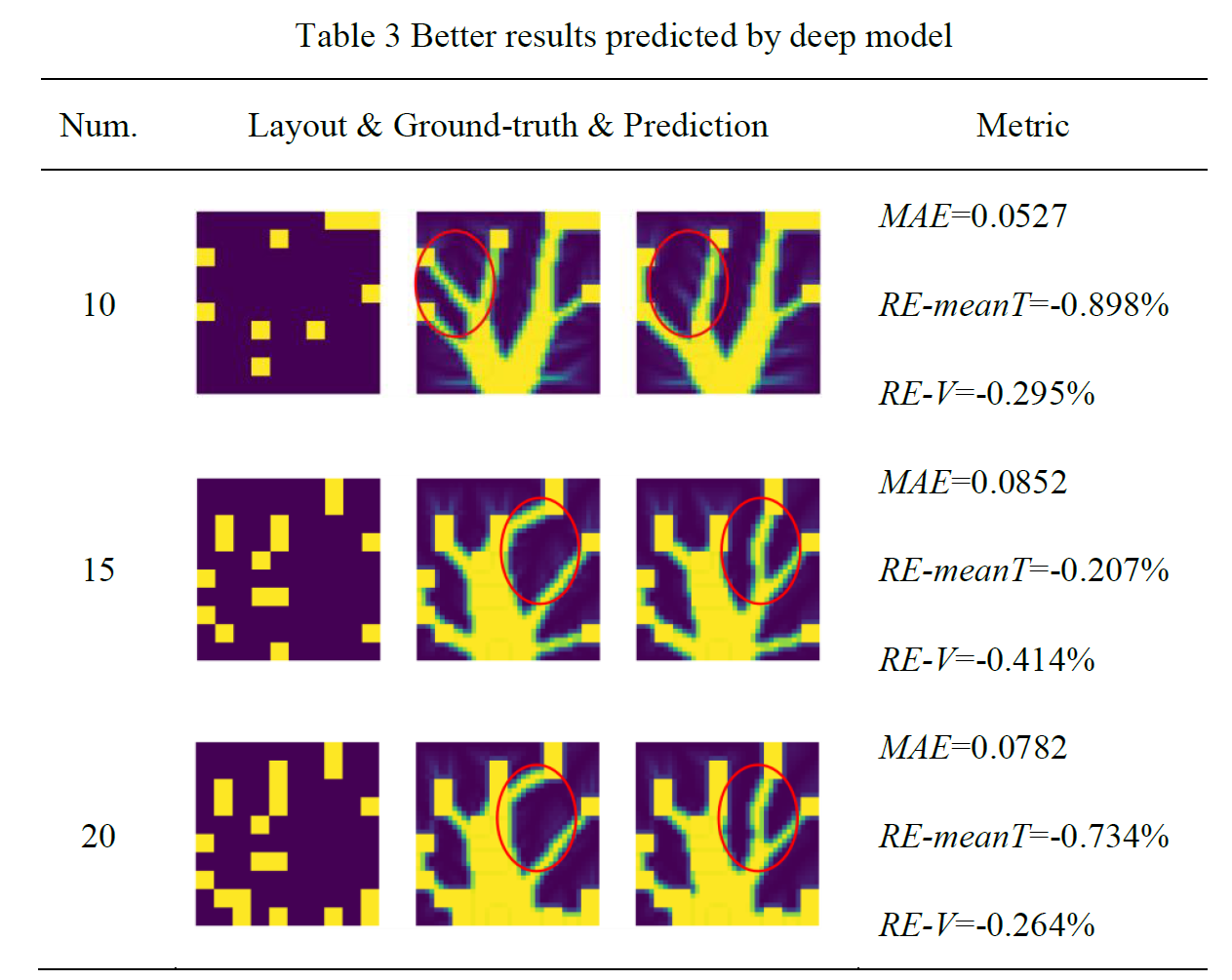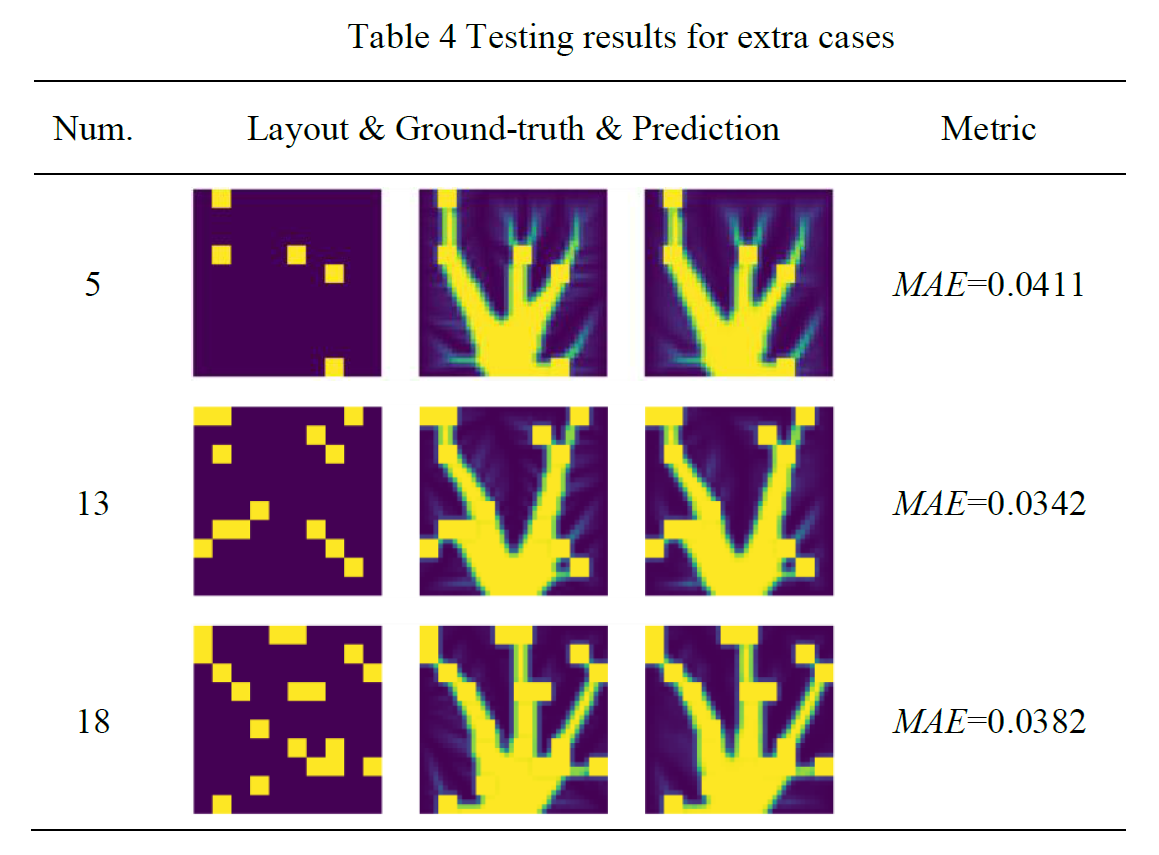Results
Prediction accuracy and performance
Table 2 lists the prediction results of some test datasets, which are highly consistent with the results of traditional optimization design, and the average pixel relative error of the model prediction results is maintained at 3% more or less. In addition, the experiment found an interesting phenomenon, for some thermal layout problems, the deep learning model predicts structures with better performance.

As shown in Table 3, the prediction results differ significantly from the traditional ones at the heat transfer branch path in some local areas (shown in the red circle in the figure, where the MAE is larger). Further through the performance evaluation criteria analysis, compared with the traditional design results, the design results predicted by the deep learning model use less HTCM material (RE-V), but have better heat transfer performance (RE-meanT). In summary, the test results effectively verify that the deep surrogate model has high prediction accuracy, and at the same time, through a large number of scheme learning, it is possible to obtain better performance solutions for individual design problems, providing new inspiration for traditional design optimization.

Model robustness and transferability
To further verify the robustness and model transferability of the deep surrogate model, the number of components outside the training samples (5, 13, 18) was tested. As shown in Table 4, the test results still have high accuracy, and the average pixel error is around 3% to 5%.
